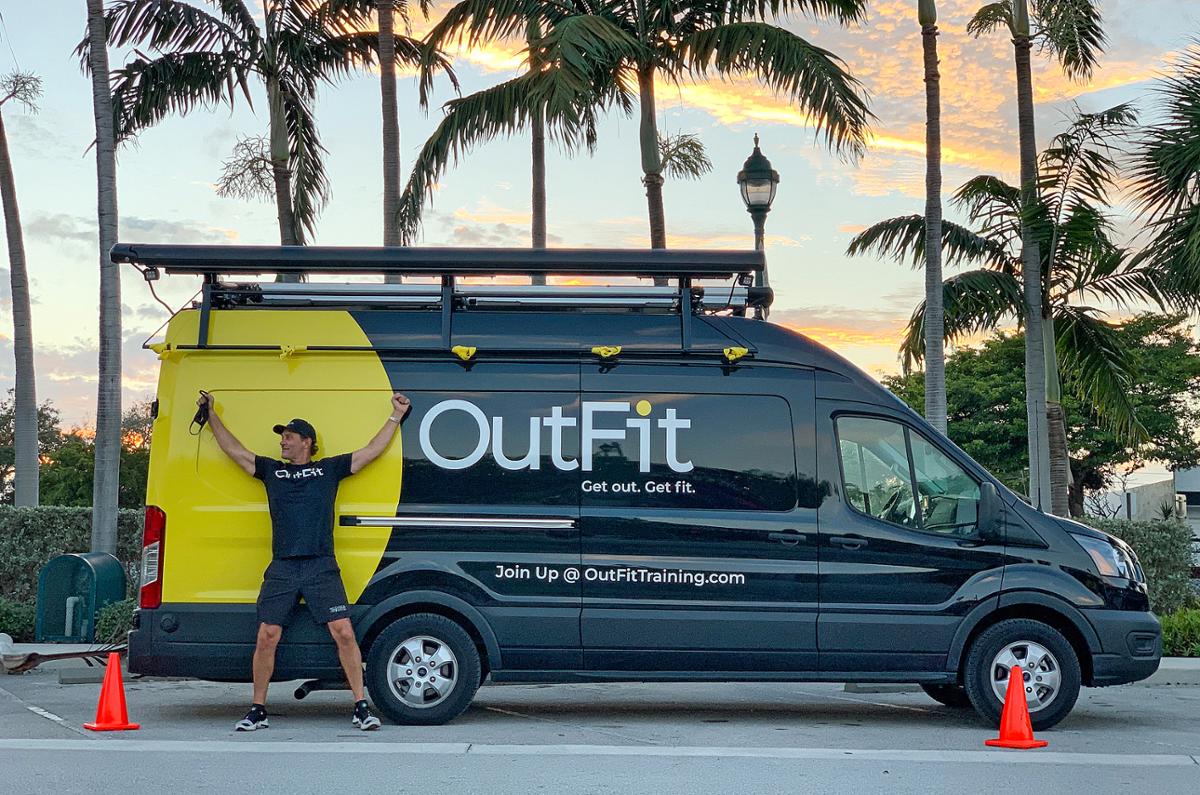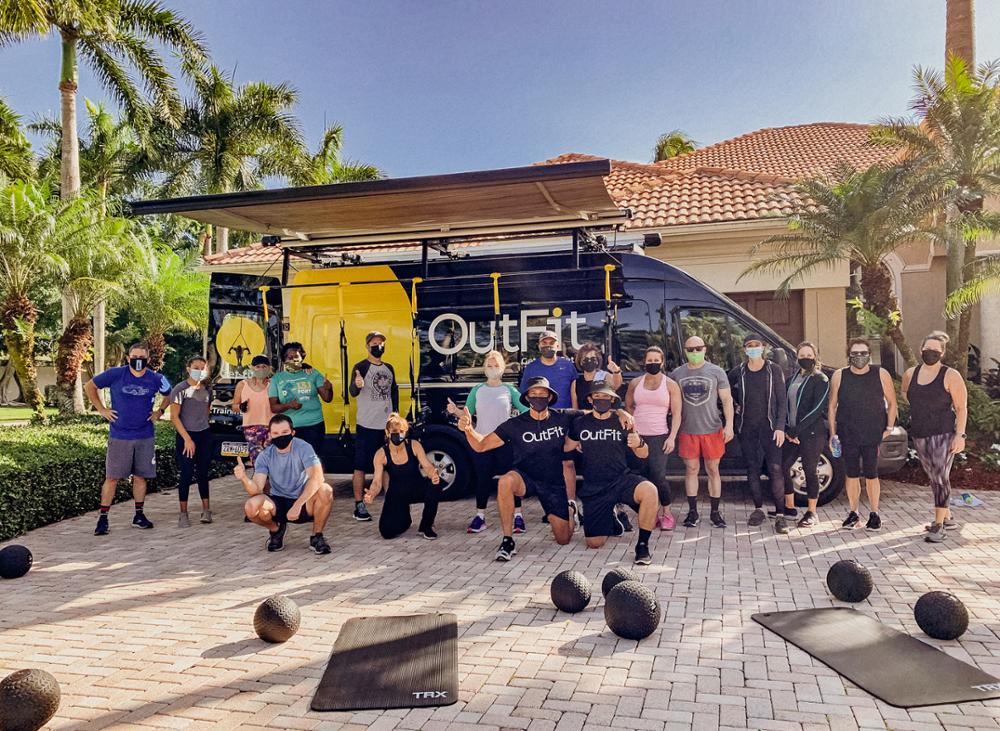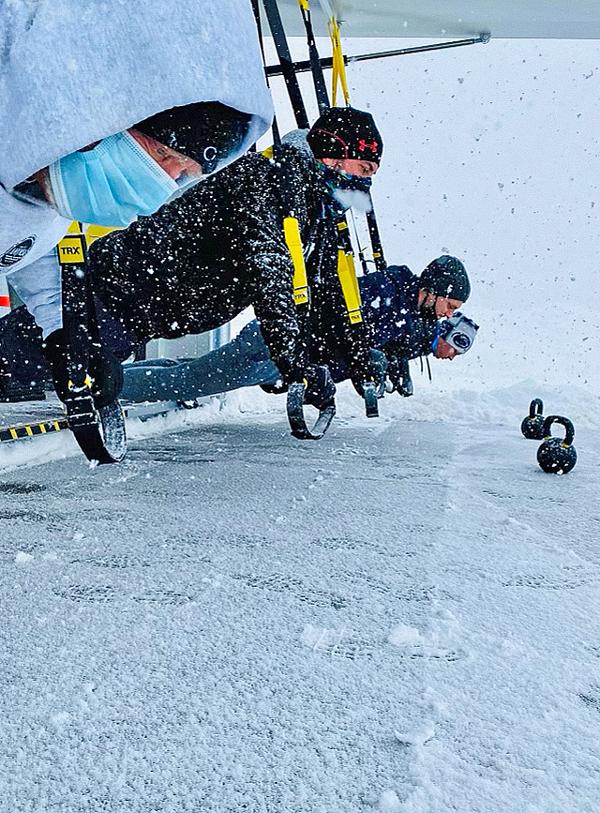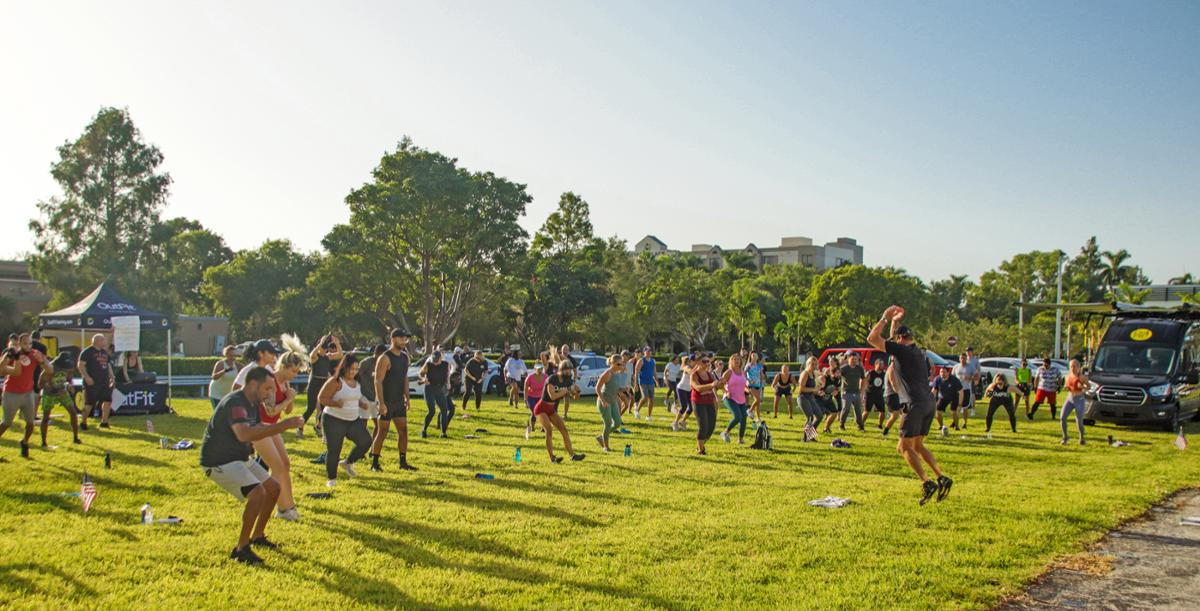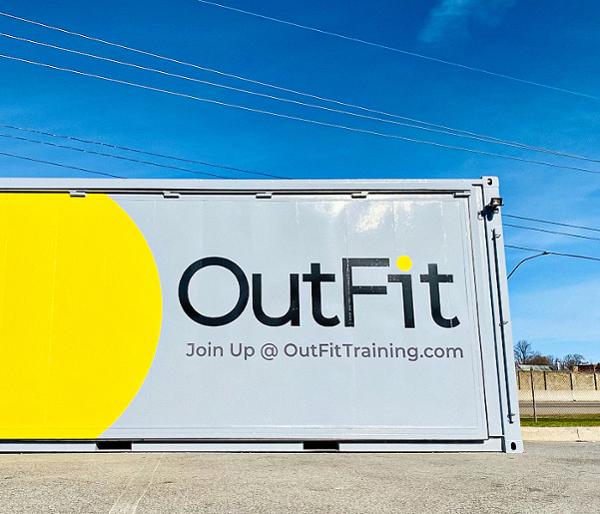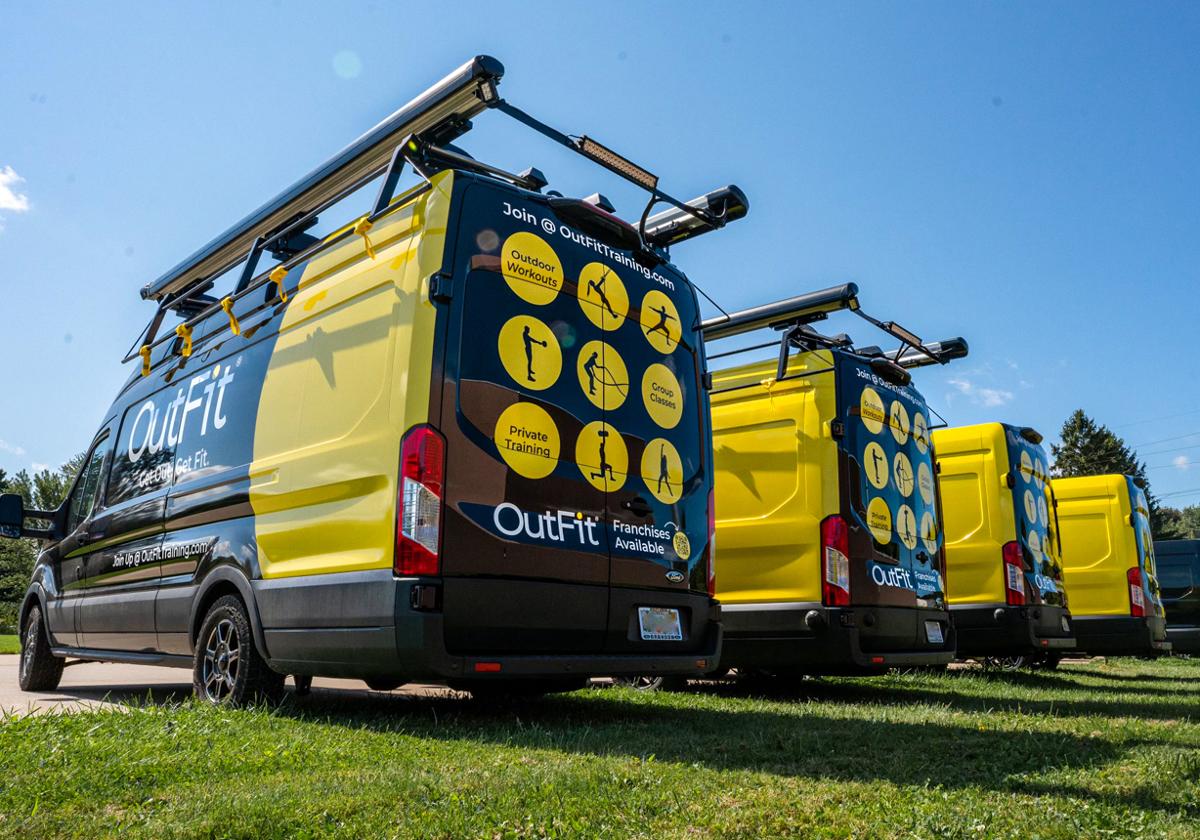With TRX already a global phenomenon, where does the motivation come from to begin again?
I’m a start-up guy. I like creating something which wasn’t there yesterday, working out ideas, vetting them and building a team to bring them to fruition.
TRX has become a pretty big machine and I’m not a guy who grew up in big, corporate management structures, so I’ve brought in some folks who, I hope, can scale up my “big kid”, so I can go over and work on the new baby.
What is OutFit?
A fleet of world-class gyms rolling through neighbourhoods like Amazon delivery vans, meticulously designed so you can set up a class for 30 to 40 people in 10 minutes.
Each van has enough gear to train up to 100 people: suspension trainers, rip trainers, ladders, strength bands, bandits, slam balls, kettlebells, heavy ropes, jump ropes and ground mats. In addition to our TRX-style HIIT classes, we’ve partnered with Zumba and will also be launching OutFit’s Yoga Under the Sun classes this winter.
This network of mobile gyms is coordinated by an extremely sophisticated technology platform, which is essentially a proprietary mash-up of similar capabilities to Uber and Mindbody, all wrapped up in a subscription business model like Classpass. It’s a powerful technology suite that, like Uber, has both a consumer-facing and an operator-facing app and a web portal.
Where did the idea come from?
It’s been bubbling for a long time. About 10 years ago TRX ran a brand activation programme called TRX on Tour, where we’d fill a van full of training gear and we had racks from the roof where we could hang 10 or 12 suspension trainers. Our master instructors would take turns on the magical mystery tour, hitting cool outdoor events and doing activations for our key club partners.
Although the response was insanely positive, it wasn’t the right time to launch because the technology to manage it hadn’t really evolved yet. But I kept thinking about the concept and then along came geo-location and social media, which were the tech tools I needed to support the logistics.
I’d been working on OutFit in earnest for about a year when COVID-19 arrived and the appetite for outdoor fitness exploded. I knew the time had arrived.
When did you launch?
We launched in April 2021. We’ve spent the past seven months proving the concept in Fort Lauderdale, with two mobile training vehicles and an Outpost – the 10 feet by 20 feet containers which act as a billboard.
The response has been overwhelmingly positive, with the initial platform memberships already filled more than halfway to full capacity. We’ve also signed a great franchise partner with a long track record of success who will be developing the entire area between Palm Beach and Miami.
What’s the target market?
The people who don’t belong to gyms. It used to be about 80 per cent of the US population, but this has increased as a result of the pandemic.
I don’t want to compete with gyms, I want to complement them. We’re going to the places where they aren’t: the parks, the schools and the cul-de-sacs.
Why does it appeal to people?
It’s very visible and visually appealing. Most of our early membership has come from people driving by and seeing the classes in progress. It’s outside in the elements, which is pretty awesome and appeals to those who feel wary about being inside at the moment.
The pandemic has helped to motivate more people to exercise outdoors. We set up a test lab in Erie, Pennsylvania and feared we may struggle because of the weather, but we found people who live in cold climates are hardy folks who are used to the elements, so we’ve consistently had 20 or 30 people in classes, even in the snow.
How much does a franchise cost?
If you wanted to prepay everything for the first year: the van, the gear, the territory, the marketing, technology, class programming support and lead generation, it would be about $140,000 (€120k, £102k). And a big portion of that is financeable through Ford.
We’re selling a great business in a box, but we will also feed business into that box. At HQ, we’ll do all the big picture marketing and give the tools and playbook to our franchisees to manage local promotions. If you run it as it’s been designed you will be successful. That’s what we’re proving now in Fort Lauderdale.
We believe OutFit is sufficiently low-cost and flexible enough to democratise who can have their own business in the health and fitness industry and hope to attract a broad set of franchisees.
How much does it cost to be a member?
There are two tiers of membership: Open and Private.
Private can be done individually or with others at an additional cost per person. The smaller the group size the higher the price. For Open (large group) membership costs US$99/month (€87, £74) for unlimited individual access and US$129 (€114, £96) for unlimited family access. Private PT is US$80 (€69, £59) an hour on average, and always includes a ‘plus one’ at no additional charge.
Additional members can join to form a private group for US$50 a head (€44, £37) and the van comes to you.
What are your expansion plans?
The goal is to enter select markets in Europe in 2023. We learned some lessons with TRX on the challenges of going global too early so we want to have the staffing and support in place to launch from a strong base.
Final question – what’s happening with TRX?
Throughout the pandemic we built a robust digital delivery platform for our content called the TRX Training Club: a direct-to-consumer content service which uses all our functional training products. It includes live group sessions, virtual PT and a huge library of on-demand classes. We’ve also taken our professional education and certification online.








